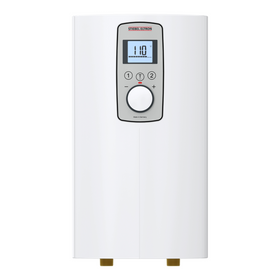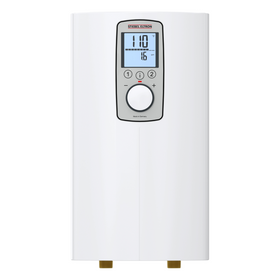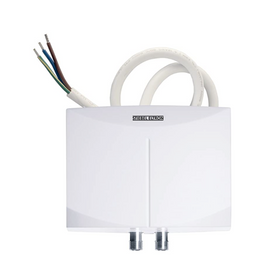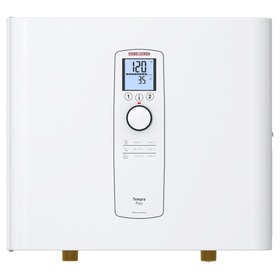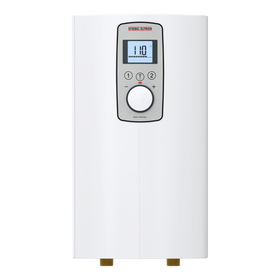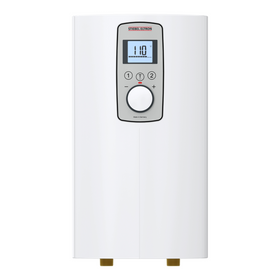
Washers and Dryers: Buyers Guide
Last Updated: Feb 26, 2025Gone are the days of washing clothes by hand in a washbasin and clothes wringer. Over 85 percent of American households have a washing machine in their home. While some energy-saving families choose to air dry their clothes through the simple and appropriate technology of a clothespin and a clothesline, about 80 percent of households own a clothes dryer. Most of us have become accustomed to the convenience of washing and drying our clothes with the push of a button. But did you know that ENERGY STAR® washers and dryers reduce both the energy and water usage of our homes while saving us money?
Table of Contents
- When Did Washing Clothes Start?
- What Is An ENERGY STAR Washers and Dryers?
- Is ENERGY STAR and High Efficiency the Same Thing?
- Are Energy Efficient Washers and Dryers Worth It?
- Do High-Efficiency Washers Clean Clothes Better?
- Types of Washers
- What Kinds of Dryers Are There?
- Recommended Products with Pricing
When Did Washing Clothes Start?
Our ancestors washed their garments by hand on top of rocks in a river or lake. The invention of the scrub board in 1797 was the first step towards the modern-day systems for washing clothes. Subsequently, in 1874, an inventor by the name of William Blackstone created a hand-cranked washing machine with a mechanical wringer to help get rid of extra water and speed up the air-drying process. With the advent of electricity, electric wringer washers became available in 1911 and were the precursors to modern-day machines that operate on spin cycles. Today, the inclusion of microchips and other high-end technologies mostly make doing the laundry a "hands-off" chore.

Similar to the history of washers, the old clothes dryers were hand-cranked. The first dryer was developed in 1800 in France. Then, in 1938, Ross Moore, an inventor from North Dakota (where long, cold winters made air drying clothes a nightmare), designed an electric dryer. While electric washers and dryers dramatically reduced the amount of labor and time needed to do the laundry, they introduced a significant energy demand. That energy costs money and translates into an environmental burden. Procter & Gamble estimates that the average per-family carbon footprint from doing laundry is about 480 pounds of CO2 per year.
What Is An ENERGY STAR Washers and Dryers?
The average washer uses around 255 watts per hour, while dryers can use upwards of 2,790 watts per hour. A straightforward way to reduce the energy used by your washing machine is by turning down the temperature setting and washing with cold water. Heating hot water uses up to 90 percent of the energy required to wash clothes.
New energy-efficient household appliance technology has driven down the amount of energy required to wash and dry clothes. Today, homeowners can find both washers and dryers designed to reduce the amount of energy that laundry time requires. That's where ENERGY STAR is valuable.
According to the ENERGY STAR website, "certified clothes washers use about 25% less energy and 33% less water than regular washers. Over the product's lifetime, models that have earned the ENERGY STAR can save $380 in energy costs. They have a greater tub capacity, which means you can wash fewer loads to clean the same amount of laundry."
For dryers, including ventless clothes dryers, advanced moisture sensors within the machines can help reduce energy use by automatically shutting off when clothes are dry. ENERGY STAR dryers use approximately 20 percent less energy by using less heat while still efficiently drying your clothes.
Is ENERGY STAR and High Efficiency the Same Thing?
ENERGY STAR washers and dryers can drastically reduce the amount of energy used during laundry day. High-efficiency (HE) washers, marketed by several prominent brands such as Maytag and Whirlpool, are designed to save energy and water usage. While HE washers do cut back on energy usage, their main benefit is related to water savings. These types of washing machines require specific high-efficiency detergents that clean clothes with lower water levels in the washer. According to the EPA, HE washers might be able to save 6,000 gallons of water per year for an average family. While certainly an essential element for the sustainable household, ENERGY STAR-rated washers and dryers are more focused on energy savings, not water savings).
Are Energy Efficient Washers and Dryers Worth It?
The average U.S. household does eight loads of laundry each week for about six hours of use. This can add up to $115 per year in electricity costs alone. If we take the stated energy savings quoted by ENERGY STAR of 25 percent energy savings for washing machines, families can expect to save between $28 and $30 each year.
Clothes dryers are the most energy-intensive appliances in the home. They can consume as much energy per year as a new energy-efficient refrigerator, washing machine, and dishwasher combined. Energy Sage estimates savings of $210 in electric bills over the lifetime of an ENERGY STAR-rated dryer.
Your savings will increase with more people in the house and the frequency of washing and drying clothes. Washing machines that are designed to reduce water use can add extra savings to your monthly utility bills. Investing in a clothes drying rack to reduce dependence on electric dryers when the weather cooperates will only further increase potential savings.
The ENERGY STAR label does not cost you more. Brand, distribution, features, size, etc., drive pricing of washers and dryers, so your energy savings go directly to your wallet.
Do High-Efficiency Washers Clean Clothes Better?
Many ENERGY STAR-rated washing machines are high-efficiency appliances that offer superior cleaning technology and energy and water savings. The reduced amount of water required in HE washers means that less detergent will be required. Less detergent means less wear and tear on your clothes and fewer bottles of soap to buy—saving you money. The high-efficiency detergents are designed for superior cleaning. ENERGY STAR certified washers have a wide variety of spin cycles or wash cycles. The extra movement keeps clothes in constant motion throughout the washing process for a deeper and better clean.
Types of Washers
The three main types of washing machines include front-loading washers, traditional top-loading washing, and high efficiency (HE) top-loading washers.

One benefit of a front-loading washer is that it can be stacked with a matching dryer, which helps save space for people with limited square footage. In addition, these types of washers tend to use less water per cycle. On the downside, these are usually more expensive, and cycle times can take a bit longer than top-loaders. And remember, once you start the cycle, you cannot add that extra sock you dropped in the hallway.
With top-loaders, less water is utilized, and there tends to be less vibration. HE top-loaders even further reduce the amount of water used. And you can always open the top door to add more clothing. The downside of these types of washers is that they are not stackable. This can be a problem in smaller homes and apartments. In addition to that, their center agitator can put more wear and tear on clothing.
What Kinds of Dryers Are There?
The main dryer style options include vented dryers, condensing dryers, and heat pump dryers. Vented dryers work by heating air and blowing it through tumbling clothes before venting the heat out of the home. These dryers are usually the cheapest upfront, but use a lot of electricity and can sacrifice the building envelope because of the vent—which is essentially a hole in your wall. Condensing dryers, on the other hand, rely on a heat exchanger to remove moisture from warm air that has passed through your damp clothes. These options are generally a bit more energy efficient, though the upfront cost can be prohibitive. Heat pump dryers are one of the most energy-efficient options on the market. A separate heating element is not needed. Instead, heat is generated within the dryer by compressing Freon gas.

Recommended Products with Pricing
While hundreds of washing and drying machine options are on the market, below, we recommend the most energy-efficient options for the sustainable home.

HE Top-Loader Washer
The Samsung WA50M7450AW is a five cubic foot top-loading washing machine that costs around $660. Not only does this washing machine reduce vibration, save water, and reduce energy consumption, but it is a smart product as well. Its Smart Care app allows you to interact with your washer and dryer and perform an immediate diagnosis and offer quick solutions. In addition, this washer is big enough for extra-large loads.

Heat Pump Dryer
The Blomberg DHP24412W 24″ Ventless Heat Pump Front Load Electric Dryer costs just over $1,400 on Amazon—a pricey option. But this dryer will save you money in the long run through reduced electricity bills. It can provide improved thermal performance of your home by reducing air leaks in the building envelope. This ventless clothes dryer has 16 functions along with different types of clothing and drying techniques.
If you are replacing your washer or dryer or buying your first models, be sure to look for the ENERGY STAR label. It will not cost you more—it will save you money.
Tobias Roberts
Tobias runs an agroecology farm and a natural building collective in the mountains of El Salvador. He specializes in earthen construction methods and uses permaculture design methods to integrate structures into the sustainability of the landscape.




